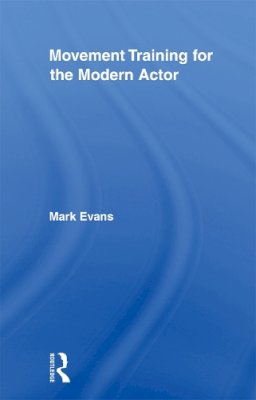
Movement Training for the Modern Actor
Mark Evans
This book is the first critical analysis of the key principles and practices informing the movement training of actors in the modern era. Focusing on the cultural history of modern movement training for actors, Evans traces the development of the ‘neutral’ body as a significant area of practice within drama school training and the relationship between movement pedagogy and the operation of discipline and power in shaping the professional identity of the actor.
The volume looks in detail at the influence of the leading figures in movement training — Laban, Alexander, Copeau and Lecoq — on twentieth century professional actor training, and is informed by interviews with students and staff at leading English drama schools. Mark Evans re-evaluates the significance of movement training in the professional drama school, offering a new understanding of the body as a site for performative resistance to industrialization. Despite the publication of a number of ‘how to’ books on movement training for the professional acting student, this is the first text to look behind the curtain and write the unseen biography of the actor’s body.
Product Details
About Mark Evans
Reviews for Movement Training for the Modern Actor
Konstantinos Thomaidis, Platform 'Including a comprehensive bibliography, this heavily annotated study is a must read for those who teach dance and movement... Highly recommended.' - CHOICE 'Extremely well researched... The book gives a positive message about the movement training of actors and should make students feel excited about this aspect of training.' - Teaching Drama 'Evan's writing style is accessible and the questions he raises are enlightening, relevant and often surprising' - Youth Drama Ireland 'Mark Evans‘ Movement Training for the Modern Actor is not another manual to be added to the expanding corpus of movement books for actors….the purpose of Evans‘ book, published in the Routledge Advances in Theatre and Performance Studies series, is different – and, for a plethora of reasons, groundbreaking. This book, certainly more interested in the context/contours of movement pedagogy rather than its content, and with a meticulously compiled list of bibliographical sources, is a most welcome addition to the blossoming field of critical engagement with body praxis.'
Konstantinos Thomaidis, Platform
